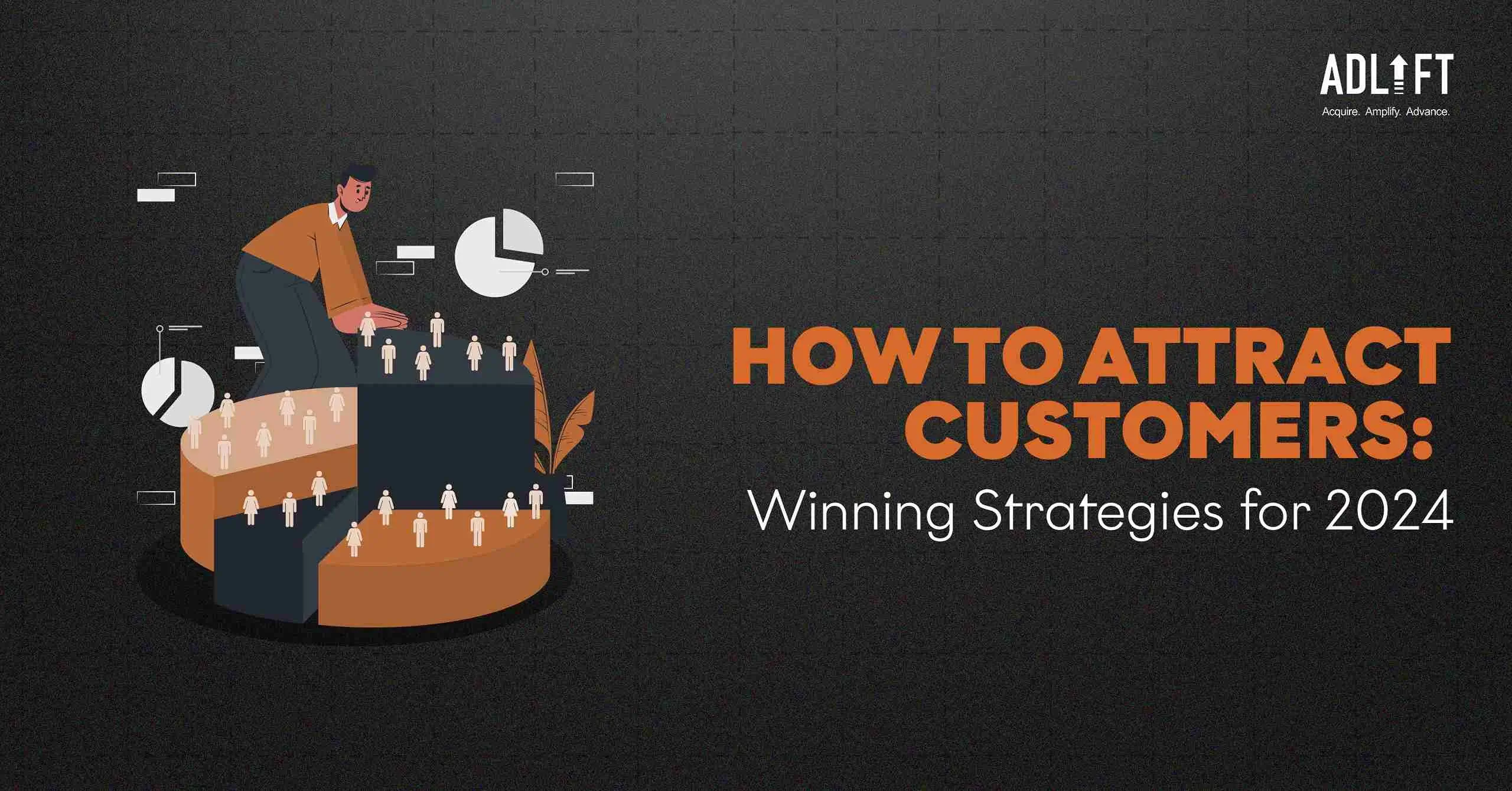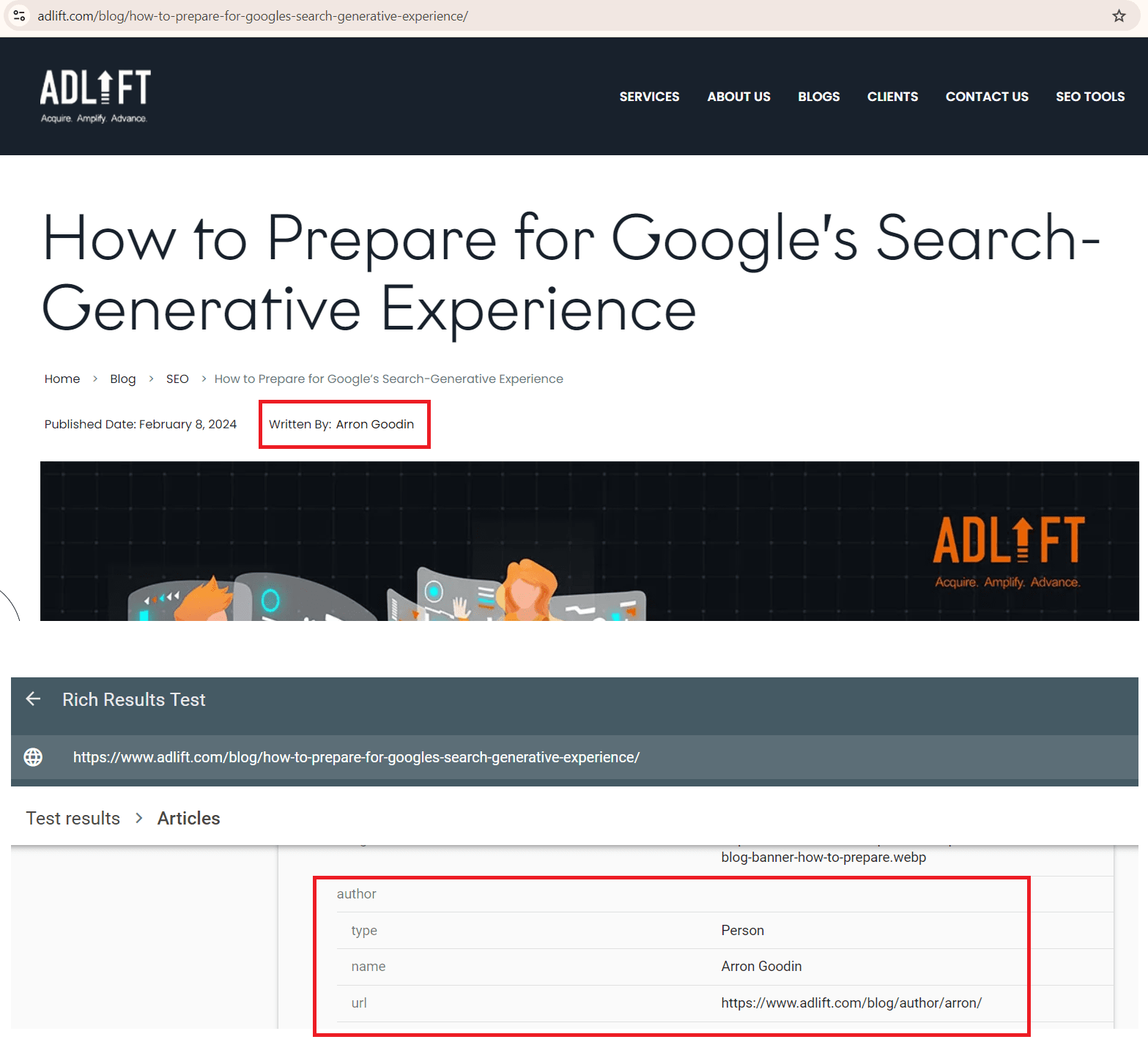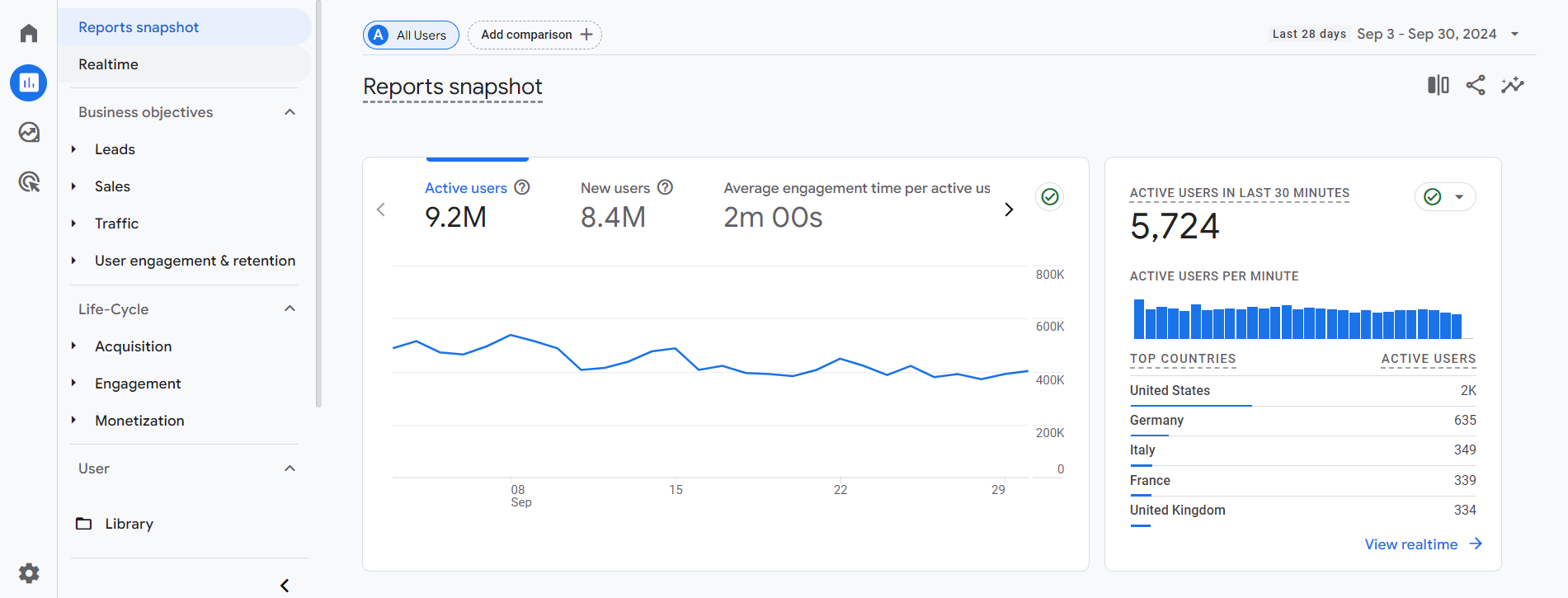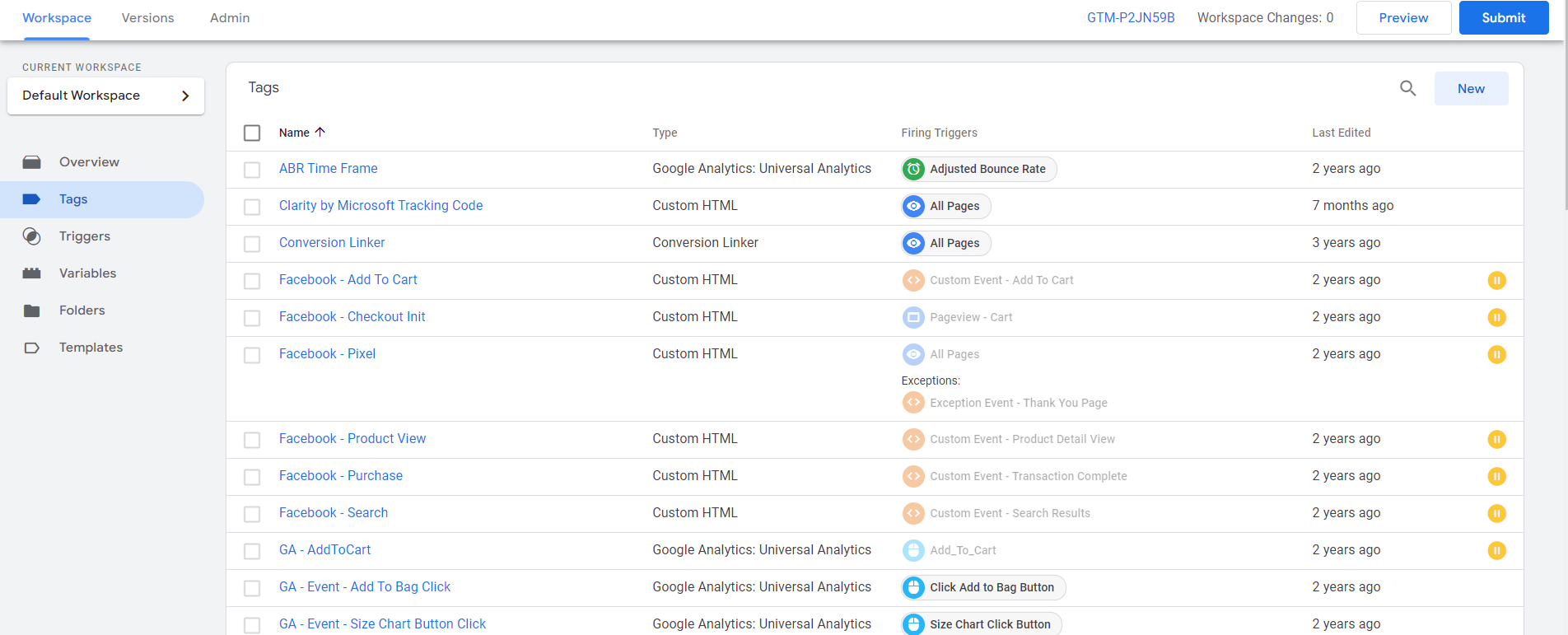How to Attract Customers? Steps to Turn Visitors into Loyal Clients

In the digital world of 2024, competition for customer acquisition is more intense than ever. Businesses are always on the lookout for new ways to stand out and stay relevant. The secret to success? Adaptability. Knowing how to attract customers, keep them engaged, and convert them into loyal buyers is crucial.
It’s not just about getting clicks – once visitors land on your website, you need to captivate them. From there, it’s all about offering an experience that encourages them to explore further. How to attract clients, and how to get customers? A well-designed, easy-to-navigate website can make all the difference. Sonaly Patel of Mailchimp puts it perfectly: “Your website needs to lead people smoothly toward conversion.”
Follow these expert tips to create a website that turns casual visitors into loyal customers. Ready to take your digital marketing game to the next level? Let’s jump right in.
Understanding the Modern Customer Journey
The modern customer journey has evolved significantly. People no longer just browse online casually; they are more informed and tech-savvy and expect a seamless experience from start to finish. From the first online interface to the final checkout, customers demand convenience, speed, and personalization.
In this digital age, how to find customers means understanding their needs right from their first search. When a potential buyer begins their online journey, they often look for answers to specific questions. Once your website is well optimized for search engines (SEO), it increases your chances of showing up in their results. This is the first step in attracting them.
The Role of Personalization
Personalization plays a huge role in how to get customers for business. People are more likely to engage with content and offers that feel tailored to their needs. Utilizing digital marketing tools like customer data platforms (CDPs) can help you track and analyze customer behavior. This enables you to personalize your content, offers, and recommendations, ensuring that your potential buyers feel understood.
Convenience and Trust
Today’s customers want things fast and easy. Offering a user-friendly website, quick checkout processes, and multiple payment options can significantly improve your customer experience. The key is to make the journey as smooth as possible.
In addition, building trust is essential in any marketing strategy to attract customers. Transparent policies, strong security measures, and real customer reviews can make visitors feel safe to purchase from your site.
The Importance of SEO and Digital Marketing
SEO, digital marketing, and a solid content strategy are crucial for how to get customers for business. Creating valuable, well-optimized content helps you rank higher on search engines. For instance, Google Analytics can help you in understanding what’s working and what isn’t. Meanwhile, email marketing, social media, and even AI-based personalization tools all play a role in ensuring you attract and retain customers effectively.
By embracing these modern strategies, you’ll not only boost visibility but also create a customer journey that converts!
Optimize Your Online Presence
To get more customers for your business, an optimized online presence is essential. Your website should not only look good but also function smoothly. A user-friendly design keeps visitors engaged and encourages them to explore further.Clear navigation, fast loading speeds, and simple layouts create a welcoming experience for potential customers. When you provide an effortless browsing experience, you’re more likely to get new customers for your business.
The Power of SEO
If you’re wondering how to get more customers, the answer lies in SEO. By improving your website’s visibility on search engines, you can draw more organic traffic. This helps your website rank higher, making it easier for people to discover you when searching for the products or services you offer. It’s one of the most effective strategies to understand how to get local customers, especially if you optimize for location-specific keywords.
On-Page SEO
On-page SEO is majorly about optimizing individual web pages to rank better. This includes using target keywords like “how to get more customers for my business” naturally throughout your content, optimizing meta tags, and including internal links. Tools like Moz or Ahrefs can help ensure you’re meeting SEO standards. The more you optimize each page, the higher your chances of appearing in search results.
User Experience Matters
Visitors will quickly leave a website that’s slow or difficult to navigate. A smooth user experience (UX) is key to how to get new customers for your business. Ensure your site is mobile-responsive, meaning it looks and works well on any device. Additionally, create clear call-to-action buttons and a clean design that can strongly impact the visitors to take the next step.By prioritizing SEO and user experience, you’ll not only get more customers but also keep them coming back for more. Your website should be designed with customer needs in mind, helping to create a lasting impression!
Mobile Responsiveness is Crucial
In today’s mobile-first world, ensuring your website is mobile-responsive is critical to how to get more customers for your business. More than half of all online traffic comes merely from mobile devices, and 17% of all your consumers come directy from the app they’re surfing . This means that if your website doesn’t work well on smartphones or tablets, you could be missing out on a large portion of potential customers.
A mobile-responsive site adjusts its layout automatically based on the user’s device, providing a smooth experience whether they’re using a phone, tablet, or desktop. Buttons should be easily clickable, text should be readable without zooming, and images should resize accordingly. This isn’t just about aesthetics; it’s about functionality and accessibility.
Google largely prioritizes mobile-friendly websites in its search rankings. So, a responsive site doesn’t just improve user experience; it can boost your SEO efforts, helping you get new customers for your business. Tools like Google’s Mobile-Friendly Test can help ensure your site meets these standards.
Create Value-Driven Content
Content marketing is one of the best ways to get more loyal clients for your business with a marketing strategy to attract customers. It helps you reach potential buyers by providing valuable information that solves their problems and answers all their questions. Whether it’s through blog posts, guides, or social media content, creating value for your audience helps attract and engage visitors.
A strong content marketing strategy can also drive traffic to your website by highly improving the SEO ranking. The more relevant and engaging content you create, the higher the chance you’ll have of appearing in search engine results. This makes it easier to learn how to attract more customers.
Evergreen Content to Educate
Evergreen content refers to articles or videos that remain relevant over time. This type of content is essential when considering how to get more customers because it consistently brings in traffic long after it’s been published. Topics like “how-to” guides, tutorials, and FAQs are great examples of evergreen content.
Creating evergreen content helps in establishing your brand as an authority in your industry. Since this content remains useful, it continually educates and informs your audience, building trust and credibility. When people know they can rely on your website for valuable information, they’re more likely to become loyal customers.
Blogs to Engage Visitors
Blogs are an excellent way to provide regular updates and insights to your audience. Writing blogs that are informative and engaging helps you get local customers by quickly providing them with relevant content that speaks to their needs. Regularly posting about industry trends, how-to guides, and helpful tips can position your business as an expert in your field.
Blog posts also encourage visitors to stay on your site longer, boosting your chances of conversion. Plus, sharing blogs on social media can increase your reach, bringing more traffic back to your website.
Videos for Interactive Learning
Videos are one of the most highly engaging and entertaining forms of content that can help you know how to get more customers for your business. They’re perfect for explaining complex topics in a simple, visual way. Whether it’s product demos, customer testimonials, or educational content, videos can captivate your audience and drive traffic.
With platforms like YouTube and social media, videos can reach a wider audience. They can also improve SEO by keeping visitors on your site longer and encouraging shares. You’d be surprised to know that 44% of marketers prefer short-form video content to promote their brand.
Leverage Social Proof
Social proof is a powerful tool in this era of digital marketing. Online reviews, testimonials, and case studies play a vital role in building credibility for your brand. When new customers see that others have had positive experiences with your business, they feel more confident in choosing your products or services.
Reviews on platforms like Google, Yelp, and Trustpilot, along with customer testimonials on your website, act as endorsements, validating your brand’s reliability. Case studies, on the other hand, offer in-depth examples of how your business has solved real-world problems, further enhancing trust.
User-Generated Content and Thought Leadership
User-generated content (UGC), like customer photos, videos, or social media posts, adds authenticity to your marketing efforts. It shows potential customers how real people are interacting with your brand, making it more relatable. When you share this content on your social media account, it strengthens trust but also encourages others to engage with your business.
Thought leadership articles also contribute to your brand’s credibility. When you share expert insights or industry trends, you establish your business as a trustworthy, well-informed, and credible source. This positions you as an authority, making it easier to attract new customers who are looking for expertise in your field.
Social Media Validation
Social media validation, through likes, shares, and positive comments, further reinforces your brand’s value. Seeing a product or service recommended by peers or influencers on platforms like Instagram, Twitter, or LinkedIn can sway potential buyers. Social proof on these platforms helps you reach a broader audience and increase brand awareness.
Together, these elements not only enhance your brand’s credibility but also drive higher conversion rates and customer loyalty. When people trust your business, they’re more likely to make a purchase and return for future ones.
Effective Marketing Strategies to Attract Customers
Given the times we’re living in today, businesses must adopt a variety of strategies to stand out and get more customers for their business. From paid advertising to email campaigns, a well-rounded marketing plan helps ensure visibility, engagement, and loyalty. Want to know how to get new customers for
Paid Advertising for Immediate Visibility
Paid advertising is one of the easiest ways to get more customers by increasing your visibility. Platforms like Google Ads (PPC) and social media ads on Facebook or Instagram allow you to target specific audiences. Pay-per-click (PPC) ads appear on search engine results, giving your business instant exposure to potential customers searching for relevant products or services.
Retargeting ads are another valuable tool. They help re-engage previous visitors to your website by showing them ads as they browse other sites. This strategy encourages them to return and make a purchase. Tools like Google Analytics or AdRoll can help monitor the success of these campaigns and improve conversion rates.
Email Marketing for Nurturing Leads
Email marketing is easily one of the most direct ways to know how to get new customers for your business. It allows businesses to send personalized content straight to potential customers’ inboxes, keeping your brand top-of-mind.
Personalization
Personalized emails that address all customers’ individual needs and preferences are more likely to be opened and read. By using customer data, businesses can tailor email content to each recipient, making it feel more relevant. Tools like Mailchimp and HubSpot allow for easy personalization and tracking.
Segmentation
Segmentation means dividing your email list into specific groups based on customer behavior, demographics, or interests. This allows you to send out targeted messages to different groups, which further increases the chances of engagement. Tools like ActiveCampaign help automate segmentation to ensure the right message reaches the right people.
Nurturing
Lead nurturing means sending a series of emails to guide new customers through the buying journey. This helps in building trust and increases the chances of conversion. By consistently providing valuable content, you can turn leads into loyal customers over time. Tools like ConvertKit can assist in setting up nurturing campaigns.
Social Media Marketing for Brand Awareness
Social media is crucial for raising brand awareness and connecting with potential customers. Platforms like Facebook, Instagram, LinkedIn, and Twitter allow businesses to actively engage with their audience in real time, building relationships that lead to sales. Consistent posting, engaging with followers through comments or stories, and collaborating with influencers are great ways to learn how to get local customers and grow your business.
Engagement rates are key to understanding how well your content resonates with your audience. This metric measures the total number of likes, shares com, comments, and clicks your posts receive. Tools like Sprout Social and Hootsuite can track engagement rates and help you refine your social media strategy. Hubspot’s marketing analytics tool can also give detailed insights on consumer behaviour, trends and customer response which can help you in improving your marketing strategies.
Implementing these strategies can help businesses know how to attract clients by boosting visibility, nurturing leads, and creating meaningful connections with their audience. Paid ads, email marketing, and social media each play an important role in attracting and converting customers, ensuring your business remains competitive in the digital marketplace.
Customer Retention: Turning Buyers into Loyal Customers
Customer retention refers to your company’s ability to keep customers coming back and prevent them from switching to competitors. It’s a key indicator of how satisfied customers are with your product or service. For subscription-based businesses, customer retention is vital as it creates long-term revenue streams.
Customer retention doesn’t require massive spending on marketing or advertising. It’s often easier to attract customers who have already bought from you before. They trust your brand and are familiar with your service. In contrast, new customers may need more convincing before making their first purchase. Retained customers not only give repeat business but also become brand advocates, providing free referrals to friends and family.
Key Customer Retention Metrics
Understanding your customer retention metrics helps identify how well you’re holding onto your customers. These numbers provide insight into loyalty, satisfaction, and areas for improvement. Below are three key metrics every business should track to attract customers and ensure long-term success.
Customer Retention Rate
The customer retention rate measures the longevity for which your primary customer base remains in the business. A high retention rate indicates strong customer loyalty.
Customer Churn Rate
This metric tracks the exact percentage of customers who stop using your product or service. Reducing churn is crucial for improving customer retention.
Customer Lifetime Value
Customer lifetime value (CLV) estimates the total revenue a customer is expected to generate throughout their relationship with your brand. Increasing CLV is a key marketing strategy to attract customers and retain them long-term.
6 Strategies to Improve Customer Retention
Keeping customers loyal requires a thoughtful approach. By implementing the right strategies, you can improve customer satisfaction and loyalty. Here are six effective marketing strategies to attract customers and retain them.
Deliver Fast Support
Quick and efficient customer support is essential for keeping customers happy. Tools like Zendesk or Freshdesk can help streamline customer service interactions.
Personalize Interactions
Personalization makes customers feel valued. Tailored recommendations and communications, powered by tools like HubSpot, can improve engagement. Marketers also believe that there is a 215% increase in consumer retention if the marketing strategies are personalized.
Invest in Employees
Happy employees provide better service, leading to higher customer satisfaction. Investing in staff training can improve overall customer experiences.
Meet Customers Where They Are
Be available on the platforms your customers use most, whether it’s email, social media, or live chat.
Gather Customer Feedback
Regularly asking for feedback shows you care about improving the customer experience. Tools like SurveyMonkey can help with this.
Incentivize Loyalty
Offer rewards, discounts, or exclusive offers to loyal customers to encourage repeat business.
The Role of Local SEO in Attracting Customers
Local SEO is essential for businesses looking for strategies on how to get new customers for their business. By optimizing your business’ website for local search results, you can directly target potential clients in your area and increase visibility.
One of the best ways to get local customers is by creating and optimizing your Google My Business profile. This ensures that your business appears in local search and Google Maps results, helping nearby customers easily find you. Additionally, using local keywords such as your city or neighborhood name on your website can improve search rankings.
Producing location-based content like blogs or guides about local events is another effective strategy. It helps you connect with nearby customers and boosts your relevance in local searches.
To track your local SEO efforts, tools like Moz Local and BrightLocal can provide insights. These tactics not only increase your online presence but also show you how to get local customers for your business.
How to Measure Success and Adjust Strategies
Measuring success is crucial for understanding how well your marketing efforts are working. Tracking these major metrics, such as traffic, engagement, and conversion rates, helps you determine the effectiveness of each of these strategies and identify areas for improvement.
- Traffic: Tracks the number of visitors to your website. High traffic levels can indicate successful outreach and content strategies.
- Engagement: This assesses how users interact with your content, including time spent on the site and pages viewed. This shows how compelling and relevant your content is.
- Conversion Rates: Measures the percentage of visitors who responded to the call-to-actions, such as purchasing or signing up for a newsletter. This metric reveals the effectiveness of your conversion strategies.
- Tools for Monitoring Performance Utilizing Google tools can provide comprehensive insights into these key metrics:
- Google Analytics: This tool helps track website traffic, user behavior, and conversion rates. It provides detailed reports on how visitors interact with your site and identifies which marketing channels are most effective.
- Google Search Console: Useful for monitoring your site’s presence in Google search results. It helps track search performance, identify issues affecting your SEO, and understand how users find your website.
- Google Tag Manager: Simplifies the process of managing and deploying marketing tags without modifying the website code. It aids in tracking user interactions and collecting data for analysis.
Other marketing automation platforms like HubSpot or Marketo also offer valuable analytics features to optimize your campaigns.
The Role of Professional Services
For a deeper analysis and more tailored strategies, professional services can play a crucial role. Data analysts and marketing consultants can help interpret complex data, identify trends, and provide actionable recommendations. Their expertise ensures that your strategies are continually refined to improve performance and achieve your business goals.
By consistently measuring success with these tools and adjusting your strategies based on the numerical results you receive by using the metrics, you can effectively enhance your marketing efforts and drive better results.
Winning the Race for Customers in 2024
Attracting customers in 2024 is all about balancing an optimized online presence, engaging content marketing, and effective targeted advertising. A strong website that’s SEO-friendly, combined with valuable content and strategic paid ads, can help you get rid of the question – ‘How to get more customers for my business ?’ and build long-term success.
By implementing these strategies, you can transform casual visitors into loyal clients, driving growth and boosting customer retention. Whether it’s through local SEO, engaging social media, or personalized email campaigns, the right approach makes all the difference.
At AdLift, we’re here to help you take these strategies to the next level. If you’re ready to boost your digital marketing game, let’s chat and find out how we can help your business thrive!
Categories
- AI
- ChatGPT
- Content Marketing
- Content Marketing & Strategy
- Digital Marketing
- Entrepreneurship
- Google Analytics
- Google Tag Manager
- Google Updates
- Influencer Marketing
- Mobile App Marketing
- Paid Marketing
- Press
- Pubcon
- Search Engine Marketing
- Search Engine Optimization
- SEO
- SEO Tools
- Social Media Marketing
Recent Posts
- How do I Verify My Business on Google to Ace Local SEO? March 17, 2025
- The Pros and Cons of Pay For Performance SEO March 17, 2025
- Website Structure for SEO: A Blueprint for Better Rankings March 17, 2025
- Keyword Cannibalization: Why It Matters for Your Company and How to Avoid It March 12, 2025
- SEO for Bing: Unlocking Opportunities for Business Owners and Marketers March 11, 2025
- Google Cached Websites: A Quick Guide to Accessing Them March 5, 2025
- Programmatic Advertising: Stop Just Talking About It, and Start Driving Real Growth (A Business Leader’s Guide to Cutting Through the Hype) March 4, 2025
- How to Use Google Trends: The Ultimate Guide for SEO & Content Marketers March 4, 2025
- Farewell, Skype: It’s the End of an Era March 3, 2025
- How to Plan and Execute a Website Migration Without Losing Rankings? February 28, 2025
Get
in Touch
Contact AdLift for a 360-degree marketing plan






